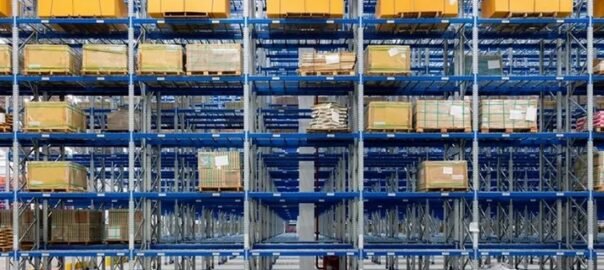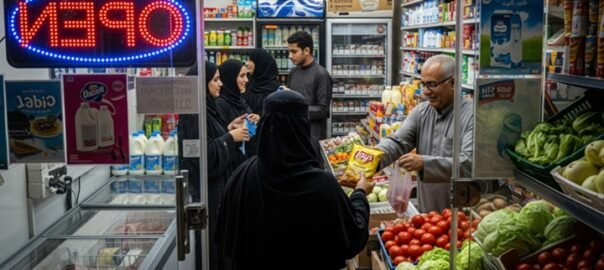A key component of Vision 2030, the NIDLP, aims to boost the logistics sector’s GDP contribution from 6% to 10% by 2030
Fuelled by the National Industrial Development and Logistics Program (NIDLP) under Vision 2030, Saudi Arabia’s logistics and warehousing sector is rapidly expanding, driven by a booming e-commerce market and increasing demand for Grade A warehousing, according to leading real estate expert JLL.
A key component of Vision 2030, the NIDLP, aims to boost the logistics sector’s GDP contribution from 6% to 10% by 2030, and localise 70% of the supply chain, it stated.
In the JLL report, titled ‘Emerging Trends Shaping Saudi Arabia’s Logistics and Warehousing Market,’ it unveils the key factors driving this growth, along with the challenges and opportunities in powering the Kingdom’s ambition to become a global logistics hub.
It also highlights significant interest and investment from both domestic and international institutional players, recognising the industrial and logistics sectors as key pillars of the Kingdom’s economic diversification strategy.
This ambitious growth is catalysed by Saudi Arabia’s Vision 2030, which aims to position the kingdom among the top 10 countries in the Logistics Performance Index, and the NDLP agenda, which aims to boost the sector’s GDP contribution and localise 70% of the supply chain, said JLL in its whitepaper.
Saudi Arabia is laying the foundation for a robust and efficient logistics ecosystem through substantial investments in transportation infrastructure, streamlined processes, and regulatory frameworks, it added.
Abhishek Mittal, Head of Industrial Advisory, Mena at JLL said: “Saudi Arabia’s position as a global logistics hub offers unparalleled access to a growing consumer market spanning three continents, making logistics and warehousing vital for high-growth sectors.”
“Guided by Vision 2030, the Kingdom is strengthening its logistics infrastructure and transportation network, prioritising sustainability, and building strong local partnerships for seamless global commerce,” stated Mittal.
“This agile and resilient network facilitates efficient movement of resources, offering investors significant opportunities to capitalise on reduced costs, efficient supply chains, and increased access to a vibrant and growing market,” he added.
JLL’s new whitepaper details that among the key drivers fuelling demand for industrial and Logistics in the Kingdom are the establishment of strategically located Special Economic Zones (SEZs) and industrial cities.
While 36 industrial cities offer ready-built factories, warehouses, and logistics facilities, attractive incentives and tax breaks at King Abdullah Economic City (KAEC), King Salman Energy Park (Spark), and Jazan Economic City (JEC), are creating clusters of economic activity and driving investment and innovation.
This dynamic environment attracts significant capital from global institutional investors, who are moving away from traditional Grade B/C warehouses, which currently comprise about 90% of the market.
The logistics and industrial real estate market is benefiting from Saudi Arabia’s position as the largest e-commerce market in the GCC, supported by high internet penetration (97%), a young and tech-savvy population, and a growing consumer preference for online shopping.
Modern commerce and e-commerce are expected to contribute around 80% to the retail sector by 2030, stimulating significant demand for modern warehouses, strategically located fulfilment centres, and last-mile delivery hubs, it stated.
In its whitepaper, JLL reveals a noticeable shift towards sophisticated Grade A facilities as global institutional investors across industries, including DP World, Gulf Islamic Investments, Arcapita Capital Company, and AP. Moller–Maersk demands built-to-suit warehouses, cold storage facilities, and last-mile delivery hubs, demonstrating confidence in the Saudi market.
Meanwhile, investment trends in e-commerce warehousing are also shifting with institutional investors and real estate developers focusing on built-to-suit logistics parks catering to e-commerce and retail tenants, and real estate investment trusts (REITs) allocating more capital toward logistics assets.
The whitepaper identifies the key industries of food and pharmaceuticals as leading the demand for specialised logistics solutions, including cold chain storage and temperature-controlled warehousing.
While the opportunities are significant, the JLL whitepaper also highlights the challenges facing companies, especially with the broader industry shift towards sustainability.
Traditionally energy-intensive, Saudi Arabia’s industrial and logistics sectors must align with national sustainability goals under Vision 2030 to reduce environmental footprint and achieve long-term savings, said JLL in a statement.
Companies that successfully navigate this transition will be well-positioned to thrive in the evolving Saudi market, it added.
The unprecedented construction boom in Saudi Arabia, aligned with Vision 2030, has injected around $850 billion into the construction industry, presenting unique challenges for global supply chains.
To strengthen supply chain resilience, businesses and investors are adopting proactive strategies such as supply chain diversification, investing in local manufacturing to enhance self-sufficiency, implementing best practices to optimise inventory and minimise lead times, and streamlining operations by embracing digitalisation, including RFID tracking and GPS monitoring.-TradeArabia News Service
News Credits- ZAWYA BY LSEG










